- Home
- H. P. Lovecraft
Bloodcurdling Tales of Horror and the Macabre Page 2
Bloodcurdling Tales of Horror and the Macabre Read online
Page 2
“When the stars are right” the Great Old Ones could plunge from world to world through the sky or rise again from deathless sleep. And the blasphemous book, The Necronomicon, contained incantations that would aid their advent, as well as other spells and ceremonies designed to defeat them.
The original Arabic version had been lost, but the text was translated into Greek, then Latin, and the volume was sought after by both those who worshiped and those who opposed the Ancient Ones. It is these entities—creatures like Yog-Sothoth and Nyarlathotep—who haunt the “Cthulhu Mythos” tales.
Nyarlathotep emerged directly from Lovecraft’s dreams, as did some of the weird locales he mentions—the plateau of Leng, and Kadath in the Cold Waste. Yuggoth, the dwelling place of certain terrifying extraterrestial beings, was another name for the planet Pluto; in a poem cycle, “Fungi From Yuggoth,” there are allusions to many more fantastic figures and places referred to in his prose.
Some of these were borrowed from the work of other writers and the basic concept of the “Cthulhu Mythos” probably owes a great deal to Arthur Machen, who wrote about a stunted and debased race of primitive beings still secretly existing beneath the lonely Welsh hills. Lovecraft was much impressed with this concept but he alone expanded the notion of a localized prehuman survival into a vast cosmology of his own creation.
Gradually he built up a rationale for both reality and dreams, nothing less than a history of the entire universe. As such, the “Cthulhu Mythos” is a literary creation far surpassing the word-worlds of Cabell, C. S. Lewis, or Tolkien in breadth and scope.
While imaginary worlds abound in modern fantasy, few of today’s writers set their sagas in Poictesme, Perelanda, or Middle-earth. But stories and novels based on the Mythos continue to proliferate. In terms of imitation and inspiration, Lovecraft may well have had more influence on other writers than any contemporary except Ernest Hemingway.
It didn’t happen overnight. As noted, he received scant critical attention during his lifetime. The annual “best” short-story collections list only two of his tales as “also-rans”; they printed none. And in Weird Tales, the lowly pulp magazine where most of his output appeared, he was never even granted a cover illustration for anything he wrote. Such honors were reserved for more popular authors and their creations—Seabury Quinn’s French detective, Jules de Grandin, or Robert E. Howard’s barbarian adventurer, Conan.
During the latter years of Lovecraft’s life the most successful purveyors of short fiction found a hospitable and high-paying market in the weekly “slicks”—Collier’s, Liberty, The Saturday Evening Post—and the big-circulation monthly magazines. Authors with “serious” aspirations often opted for The Atlantic Monthly, The American Mercury, The New Yorker, Story, or regional periodicals. The world’s greatest short-story writer was William Saroyan; we knew, because he told us so.
Lovecraft made no such claims. At the time of his death glowing tributes graced the letter column of Weird Tales and some of the amateur “fanzines” privately circulated among a few devotees of fantasy or science fiction. But their readership was minimal and their influence nugatory.
Aside from a small Canadian edition of Weird Tales, Lovecraft’s efforts had appeared abroad only in Christine Campbell Thompson’s sleazily printed British “Not at Night” series. One story was reprinted in an American anthology but attempts to publish two of his novellas in hardcover had failed. There were no foreign translations at all. In the years that followed, a single tale was adapted for radio. Filmmakers weren’t interested; television didn’t exist, nor paperback books. Lovecraft was dead, and to all intents and purposes, so was his work.
But the “Lovecraft Circle” of correspondents remained. Two of them, fellow-writers August Derleth and Donald Wandrei, tried to interest publishers in putting out a collection of his stories. Meeting with no success, they then founded a company of their own called Arkham House and announced the publication of The Outsider and Others. This imposing volume of over three hundred thousand words would sell for $5, but could be purchased at a prepublication price of $3.50. Despite wide advance publicity throughout the fantasy and science fiction field, only 150 orders were received, and the remaining 1,118 copies took more than four years to sell out.
Determined to overcome indifference, Arkham House went on to print a companion volume, Beyond the Wall of Sleep, then gradually extended its list to include the work of other contemporary fantasy authors. A series of complications subsequently arose, involving royalty bequests from Lovecraft’s aunt who died in 1941, the suicide of his literary executor ten years later, plus legal disputes between Wandrei and Derleth.
Lovecraft’s work survived it all. It even survived Derleth’s imitations of his style and subject matter, which he began writing in the forties. Derleth had won deserved praise for his “Solar Pons” pastiches, based on the Sherlock Holmes stories of Conan Doyle. But his pseudo-Lovecraft efforts were less convincing. Using a line or two from Lovecraft’s commonplace book scarcely justified calling the total work a “posthumous collaboration.” And when he abandoned this pretext his attempts to convey the essence of Lovecraft’s style didn’t come off; he sounded the notes but lost the music.
It was Derleth who constantly used the term “Cthulhu Mythos” to describe Lovecraft’s cosmic concepts. Unfortunately, his own writing involved a distortion of its meaning that may have derived from his own status as a lapsed or lax Catholic. In any case, he divided Lovecraft’s Great Old Ones into what in effect were the Good Guys and the Bad Guys, fighting over possession of the earth instead of the ranch. Some later imitators picked up on this, straying far from Lovecraftian logic.
But when considering Derleth’s influence, one single fact remains all-important—he championed the revival of interest in Lovecraft’s work. After Donald Wandrei’s service in World War II his Arkham House activity was largely limited to editing Lovecraft’s letters, eventually published in five volumes. Derleth, however, continued to keep the stories in print, reissuing portions of the original collections under other titles. When fantasy anthologies began to flourish, he sold one-time reprint rights to various stories, including those in public domain, and until his death in 1961 he claimed control of the literary estate. As early as 1945 he compiled a paperback Lovecraft collection for an Armed Services edition. Its unexpected popularity with a wide readership encouraged later reprinting efforts by other paperback publishers here and abroad. Gradually this continued exposure led to the formation of a new fandom, enthusiasts interested in every aspect of the man and the work. Following recognition on the part of foreign critics, Lovecraft—like his predecessor, Edgar Allan Poe—finally came to the attention of the American literary establishment.
Shortly after L. Frank Baum began writing, certain guardians of young minds and morals instigated a campaign to keep his Oz books off public library shelves. Today it is evident that this ban-the-Baum movement has failed. That it did so is in no small part due to the success of the 1939 film The Wizard of Oz. But although a number of Lovecraft’s stories have been adapted for television and motion pictures, no first-rate film has yet seen release. As a result, Cthulhu is scarcely a household word.
Nevertheless, the writing of theses and serious critiques increases with each passing year. Lovecraft has been the subject of several book-length biographies and memoirs, plus innumerable scholarly disquisitions. His books are on the library shelves. There is a Lovecraft Collection at Brown University in Providence. The prose, verse, and a significant portion of his letters are in print and seem destined to remain so, while recognition and reputation continues to soar. The fame that eluded him in his lifetime has come to Lovecraft almost half a century after his death.
Why did interest in horror fiction lay dormant for so long a time? And what brought about its present popularity?
Perhaps the answer lies buried in Lovecraft’s own work. Great Cthulhu and the Elder Gods never truly died, but they could be aroused from their slumbers only w
hen “the stars were right.” And what Lovecraft described as the oldest and strongest kind of fear—fear of the unknown—lay deathless but dormant in the years following his birth.
The age of materialism had dawned and science was hailed as a savior, freeing the world from those ancient fears of the unknown. Even those who still believed in the supernatural now engaged in psychic research to explain such phenomena on a scientific basis.
Emphasis on rationality dominated the fiction of the day. Dr. Jekyll’s transformation was the result of laboratory chemicals rather than demonic possession. And even if a few creatures like Dracula existed, they could be detected and defeated by scientists like Van Helsing.
The few horror stories approved by the literary establishment dealt almost exclusively with polite antiquarians and retired English gentlemen encountering a ghost. Fear was an isolated phenomenon born of some unusual individual experience.
World War I changed that concept. Catastrophe became common property, horror invaded the daily lives—and deaths—of millions. Rationalists sought to combat fear by denying those deaths; interest in spiritualism and psychic investigation became a popular preoccupation in the next decade.
But the depiction of legendary dread was another matter; such vulgarities were relegated to the pages of obscure publications such as Weird Tales. At the time Lovecraft penned his stories, no self-styled sophisticate dared presume to take them seriously, either as literature or as a metaphor for contemporary reality.
During the same period the printed page faced growing competition from film and radio. With the advent of sound in cinema the mass audience shifted allegiance to the new form.
In the economic and social upheaval following the war, German studios produced a number of supernatural fantasy films that reflected the doubts and fears obsessing European audiences. Americans, in the boom years of expansion and material prosperity, spurned such subject matter. Their mystery movies and the horror pictures of Lon Chaney offered realistic explanations.
It was not until this country faced its own financial depression that the supernatural finally found a degree of acceptance. Radio shows like Lights Out and Inner Sanctum gained popularity, largely with the young. And it was their response that insured success for the horror films that became regular fare in the thirties; their king was Kong, Count Dracula their dark and noble lord. Frankenstein’s monster served as surrogate for their own self-image as unwanted outcasts, victims of authority figures in a competitive society where their elders maintained rigid control.
But the majority of the audience still rejected such fantasies in favor of other forms of escapism; “screwball” comedies involving the exploits of “madcap heiresses” and wish-fulfillment sagas of lowly shop-girls or poor-but-honest young men who rose to riches. Even the gangster films catered to such visions; their anti-heroes shared the common goal of attaining fortune, even by unorthodox methods. The American Dream had yet to die, prosperity was just around the corner; individual effort, aided by scientific advances, would still bring success. Doubters and dissenters might read the new “proletarian literature” or even espouse the cause of communism, but they continued to believe in their own power to remold the world to their heart’s desire. Like the conservative upholders of the status quo, they continued to firmly reject the bogeymen and bugaboos of the supernatural.
World War II decimated American Dreamers and dissenters alike. Those who survived were faced with terrifying truths. Vast power can fall into evil hands—the world can be destroyed—science, armed with biological and nuclear weaponry of its own creation, is not our savior but an omnipresent enemy.
There was a growing distrust of every ideology in the age of “ism”—fascism, communism, militarism, sectarianism, McCarthyism, racism, terrorism, even misguided idealism, proved no protection against corrupt leadership. In the light of such attitudes the movie monsters of the thirties frightened no one in the forties. Even Abbott and Costello could easily outwit them. Their place was taken by mad scientists, prehistoric beasts, or creatures from outer space. Such menaces came in many forms, but with a choice of only two motivations—to take over the world or to destroy it.
Nevertheless, the hero usually managed to triumph in the end. The world could still be saved after all, and for a time this message was reassuring.
But revelations of personal insecurity continued to rise in the decades that followed. Depletion of natural resources, spiraling inflation, religious warfare, governmental and industrial corruption, political assassination, street crime, mass murder, and drug addiction grew and flourished. No heroes appeared on the scene to offer succor or solutions.
Like the turmoil and upheaval that preceded the return of the Great Old Ones in Lovecraft’s fiction, the world seemed to be preparing for its final fate now that “the stars were right.”
And it was then, in doubt, dismay, even in despair, that many turned to the one “ism” that still remained.
Exorcism.
Graffiti proclaimed, “God is dead.” And a television comedian capped the concept with an explanation for subsequent behavior patterns—“The Devil made me do it.”
Black humor, perhaps, but many a true word is spoken in jest. And when the book and film of Rosemary’s Baby appeared, heralding the literal rebirth of Satan on earth, its satirical thrust was blunted by recognition of a growing reality. Cults dedicated to witchcraft and Satanism had indeed become popular and the acknowledgement of Evil as a tangible presence gained adherents. Materialists still scoffed but some of them began decorating their cars with bumper stickers announcing that “Richard Nixon is Rosemary’s Baby.” Again, the avowed intent was humorous—but behind the jokes could be sensed a genuine desire to personify the source of man’s misfortunes. Satan became the scapegoat. And exorcism—that ancient, half-forgotten ritual to rid us of our demons—suddenly captured the imagination and attention of the masses.
Viewed in retrospect, The Exorcist was scarcely a literary landmark, and the film that followed was illogical and prolix. Few members of the audience could clearly explain the origin of the demon, why this entity took possession of a child, or exactly how it met its final fate. Nor was their interest a religious one. The spectacle of a little girl whose face was transformed by makeup into an unreasonable facsimile of Harpo Marx’s “gookie” grimace, spewing obscenities and green pea soup or rotating her head a full 360°, seemed the chief attraction.
Nevertheless, it was clearly stated that the Devil made her do it. And the statements of box-office receipts convinced both filmmakers and publishers that doing it was profitable. Hell had become a hot property.
Now the Devil popped up again, together with his deputy demons, in a spate of fiction and film; The Exorcist spawned a sequel, The Omen became a trilogy, The Sentinel and a score of others advanced the notion that the Evil One was alive and well and living in your local drive-in theater.
If the Devil lives, then it would seem that other evils flourish in his wake. And so they did. Vampires rose again to refresh themselves with a sanguinary nightcap; not to be outdone by the undead, the dead themselves awakened from their graves for a midnight snack of sheep intestines that convincingly substituted for human entrails. Hirsute werewolves followed suit and a seemingly psychotic mass murderer was solemnly identified by a psychiatrist as “the Bogeyman.” Ghosts, ghouls, succubi, and incubi infested earth, and even in outer space The Alien incubated in a human breast, emerging to create catastrophe for cat lovers on a spacecraft.
Explicit violence increased in a series of “spatter films” and the butcheries depicted in many horror novels could be described as hackwork in every sense of the word. Grand Guignol degenerated into not-so-grand gross-out.
All of which was a far cry—or shriek—from the perils presented in the work of H. P. Lovecraft. Or was it?
Consider the phenomenon of exorcism, this time from the viewpoint of the artist rather than the audience. Most writers who choose to work within the horror genre do
so to exorcise their own fears by exposing and expressing them to an audience. In childhood such writers are usually gifted—or cursed—with a hyperactive imagination. As adults they translate early dread of pain, death, and the unknown into fictional form; what frightened them, they reason, will also frighten their readers. Drawing upon a common cultural heritage of myth, legend, and fairy tales, they employ a technique of conveying their visions in terms of convincing reality.
The success of such efforts depends upon learning ways to involve the reader emotionally and inducing what has been called “the temporary suspension of disbelief.” It is not easily attained, and the offerings of apprentice authors in the horror field tend to be derivative and overblown.
Lovecraft was no exception to the rule. In earlier tales he often relied on the excessive use of adjectives rather than the power of suggestion, with disastrous results. But gradually he learned the value of restraint and of a more realistic approach. Refining his style, he also refined his method.
Generally speaking, most fiction can be divided into two categories, both dependent upon establishing the credibility of the supposed narrator. In simple terms, that narrator is presented as either wiser or less knowledgeable than the reader.
In the first instance, the device is used to convince the reader that anyone as intelligent as the author must know what he’s talking about and is obviously telling the truth. Belief in the narrator leads to belief in the story.
The alternative approach is perhaps best illustrated in Ring Lardner’s story “Haircut.” Here the monologue of an ignorant small-town barber unwittingly reveals to the reader more than the narrator himself is aware of.

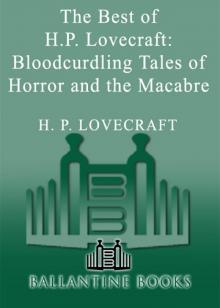 The Best of H.P. Lovecraft
The Best of H.P. Lovecraft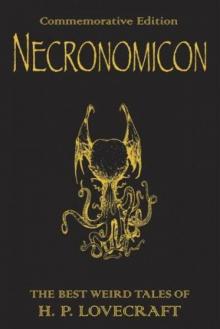 The Definitive H.P. Lovecraft: 67 Tales Of Horror In One Volume
The Definitive H.P. Lovecraft: 67 Tales Of Horror In One Volume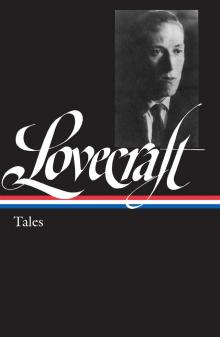 The Complete Works of H.P. Lovecraft
The Complete Works of H.P. Lovecraft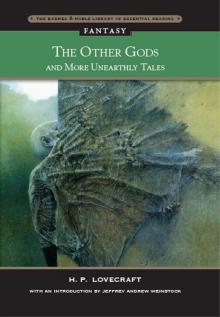 Other Gods and More Unearthly Tales
Other Gods and More Unearthly Tales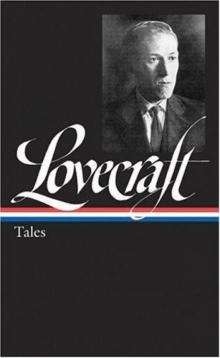 Lovecraft's Fiction Volume I, 1905-1925
Lovecraft's Fiction Volume I, 1905-1925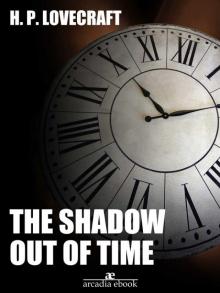 The Shadow Out of Time
The Shadow Out of Time The Shunned House
The Shunned House Lovecraft's Fiction Volume II, 1926-1928
Lovecraft's Fiction Volume II, 1926-1928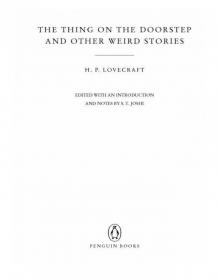 The Thing on the Doorstep and Other Weird Stories
The Thing on the Doorstep and Other Weird Stories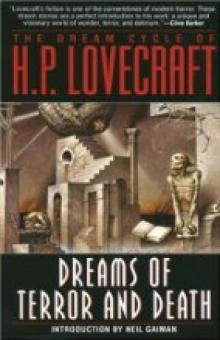 Dream Cycle of H. P. Lovecraft: Dreams of Terror and Death
Dream Cycle of H. P. Lovecraft: Dreams of Terror and Death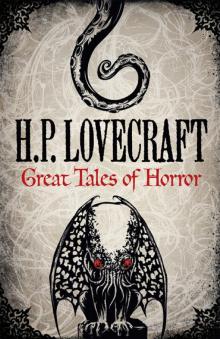 Great Tales of Horror
Great Tales of Horror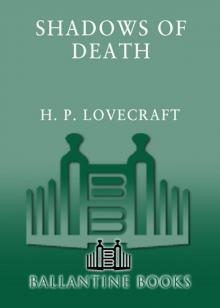 Shadows of Death
Shadows of Death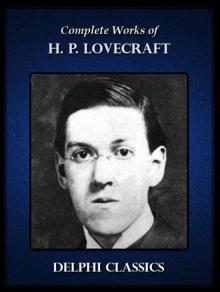 Delphi Complete Works of H. P. Lovecraft (Illustrated)
Delphi Complete Works of H. P. Lovecraft (Illustrated)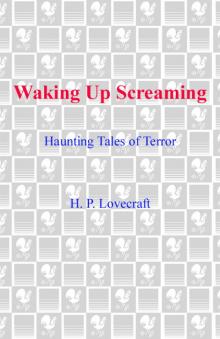 Waking Up Screaming: Haunting Tales of Terror
Waking Up Screaming: Haunting Tales of Terror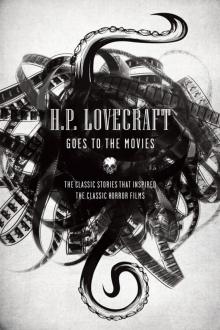 H.P. Lovecraft Goes to the Movies
H.P. Lovecraft Goes to the Movies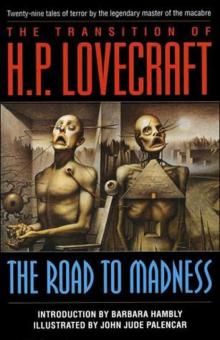 The Road to Madness
The Road to Madness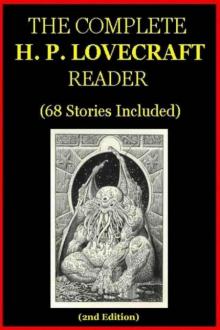 The Complete H.P. Lovecraft Reader (68 Stories)
The Complete H.P. Lovecraft Reader (68 Stories)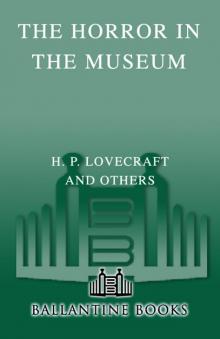 The Horror in the Museum
The Horror in the Museum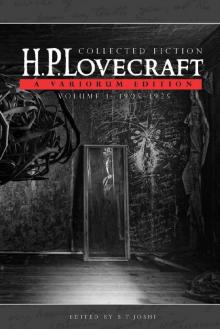 Collected Fiction Volume 1 (1905-1925): A Variorum Edition
Collected Fiction Volume 1 (1905-1925): A Variorum Edition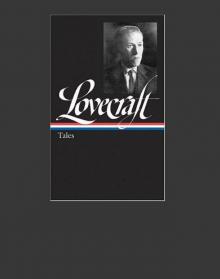 Lovecrafts_Fiction, vol.I_1905-1925
Lovecrafts_Fiction, vol.I_1905-1925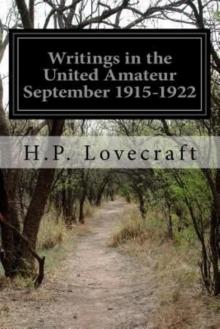 Writings in the United Amateur, 1915-1922
Writings in the United Amateur, 1915-1922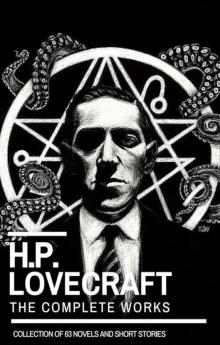 H.P. Lovecraft: The Complete Works
H.P. Lovecraft: The Complete Works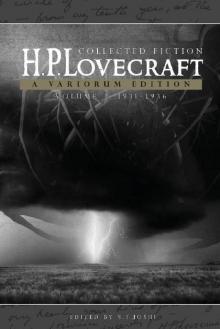 Collected Fiction Volume 3 (1931-1936): A Variorum Edition
Collected Fiction Volume 3 (1931-1936): A Variorum Edition H.P. Lovecraft: The Complete Fiction
H.P. Lovecraft: The Complete Fiction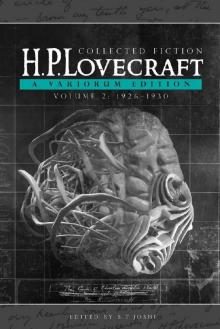 Collected Fiction Volume 2 (1926-1930): A Variorum Edition
Collected Fiction Volume 2 (1926-1930): A Variorum Edition Yog Sothothery - The Definitive H.P. Lovecraft Anthology
Yog Sothothery - The Definitive H.P. Lovecraft Anthology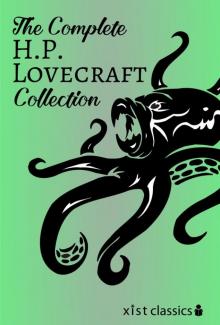 The Complete H.P. Lovecraft Collection (Xist Classics)
The Complete H.P. Lovecraft Collection (Xist Classics)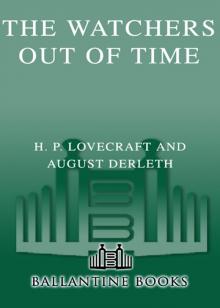 The Watchers Out of Time
The Watchers Out of Time Eldritch Tales
Eldritch Tales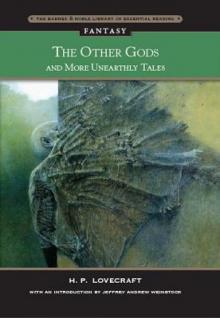 The Other Gods And More Unearthly Tales
The Other Gods And More Unearthly Tales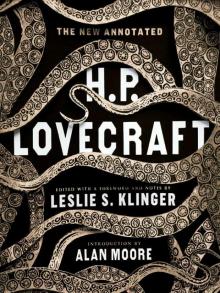 The New Annotated H. P. Lovecraft
The New Annotated H. P. Lovecraft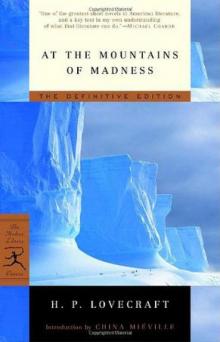 At the mountains of madness
At the mountains of madness Bloodcurdling Tales of Horror and the Macabre
Bloodcurdling Tales of Horror and the Macabre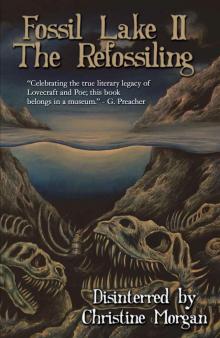 Fossil Lake II: The Refossiling
Fossil Lake II: The Refossiling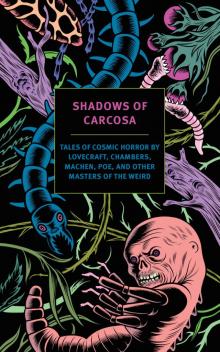 Shadows of Carcosa: Tales of Cosmic Horror by Lovecraft, Chambers, Machen, Poe, and Other Masters of the Weird
Shadows of Carcosa: Tales of Cosmic Horror by Lovecraft, Chambers, Machen, Poe, and Other Masters of the Weird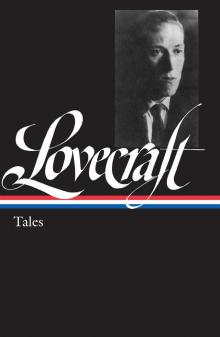 H. P. Lovecraft
H. P. Lovecraft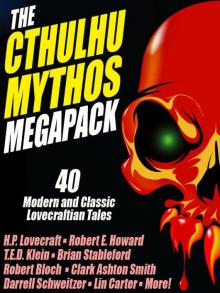 The Cthulhu Mythos Megapack
The Cthulhu Mythos Megapack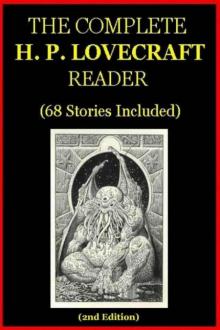 The Complete H. P. Lovecraft Reader (2nd Edition)
The Complete H. P. Lovecraft Reader (2nd Edition)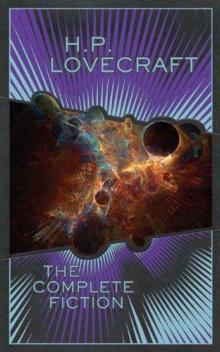 The Complete Fiction
The Complete Fiction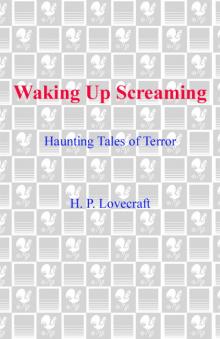 Waking Up Screaming
Waking Up Screaming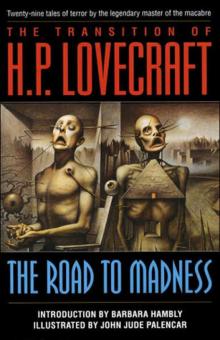 Transition of H. P. Lovecraft
Transition of H. P. Lovecraft![[1935] The Shadow Out of Time Read online](http://i1.bookreadfree.com/i2/04/12/1935_the_shadow_out_of_time_preview.jpg) [1935] The Shadow Out of Time
[1935] The Shadow Out of Time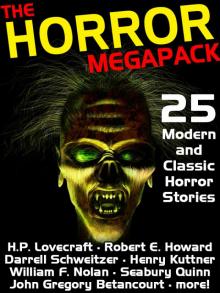 The Horror Megapack
The Horror Megapack